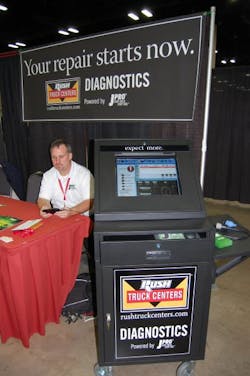So I got a chance to talk with Brent Hamil this week at the 2012 Rush Tech Skills Rodeo in San Antonio, TX, about software maker Noregon System’s effort to create an “all-in-one” diagnostic tool for truck maintenance operations.
Hamil, the director of national fleet accounts for Noregon, spent some time explaining how his firm is trying to make its JPRO software system “all-inclusive” if you will in order to help truck technicians more rapidly diagnose maintenance issues.
One of the big and almost unspoken issues in truck maintenance these days revolves around the time it takes to diagnose problems as fixing them, in many cases, is often the easier part of the process.Rather than hook up diagnostic tools from a half dozen manufacturers to a truck one by one, Hamil told me that the ultimate goal is to make JPro a “triage” product – enabling technicians to quickly figure out where the problem is, then go get the specific OEM tool or specific software program designed to deal with it.
Noregon is taking this a step further via a partnership forged with Mitchell 1 earlier this year that will add in another complete set of information to the diagnostic process, Hamil explained – displaying schematics, repair procedures, and other information alongside specific diagnostic codes, so technicians don’t have to go look up all that information as a separate task.
“It’s all about saving time for the technician,” Hamil emphasized to me. “One technician told me that what we’re doing now with JPro would allow him to collect required information in about 30 seconds, compared to the 30 to 40 minutes his current process takes. With that kind of time savings over a day, you can probably fit an additional truck repair into his schedule.”
More succinctly, it helps remove a big hassle – diagnostic information collection – that technicians must deal with on a daily basis, as modern trucks come equipped now with 10 or more onboard computers that control everything from emissions to gear selection, vehicle stability, and countless other features.

